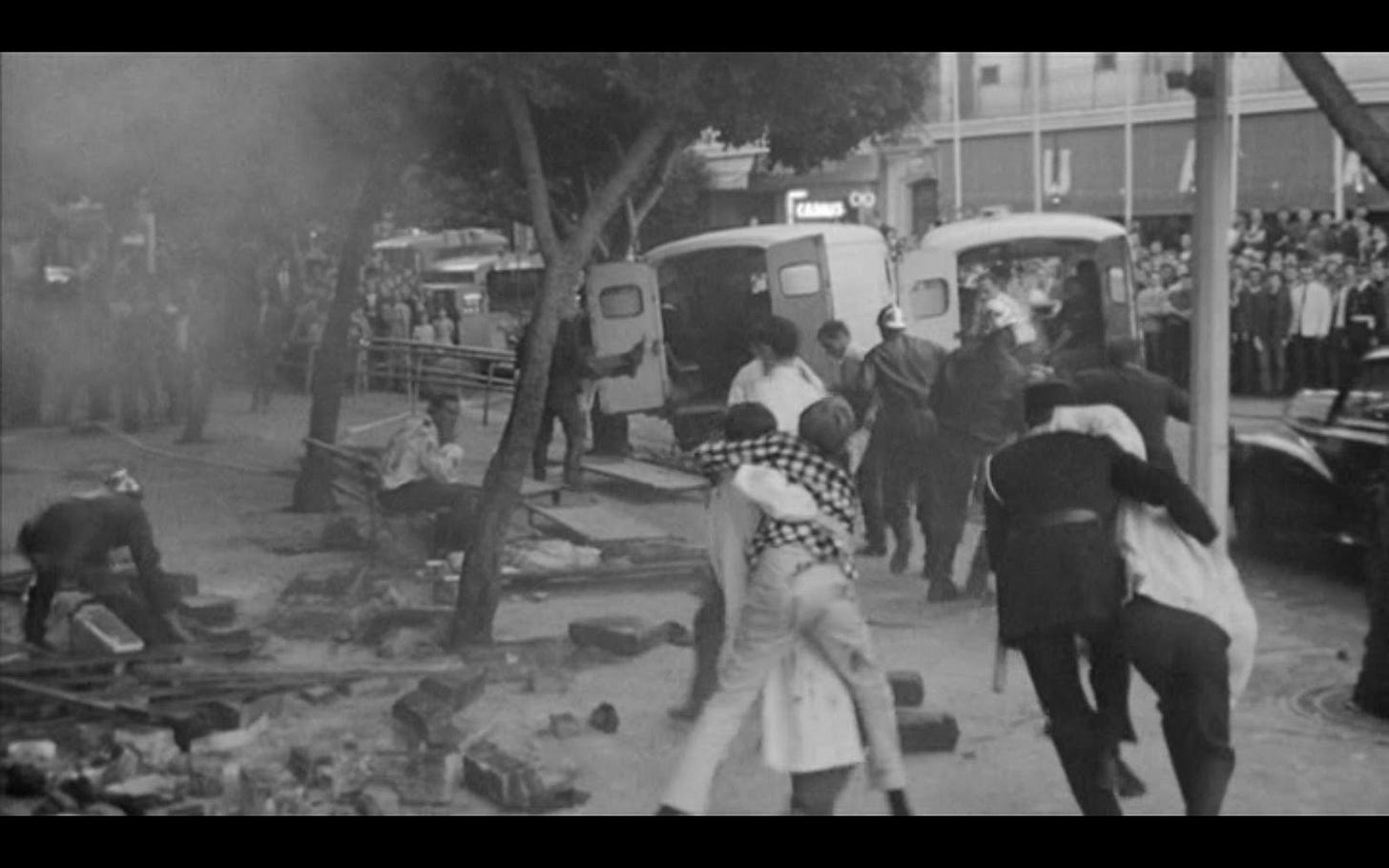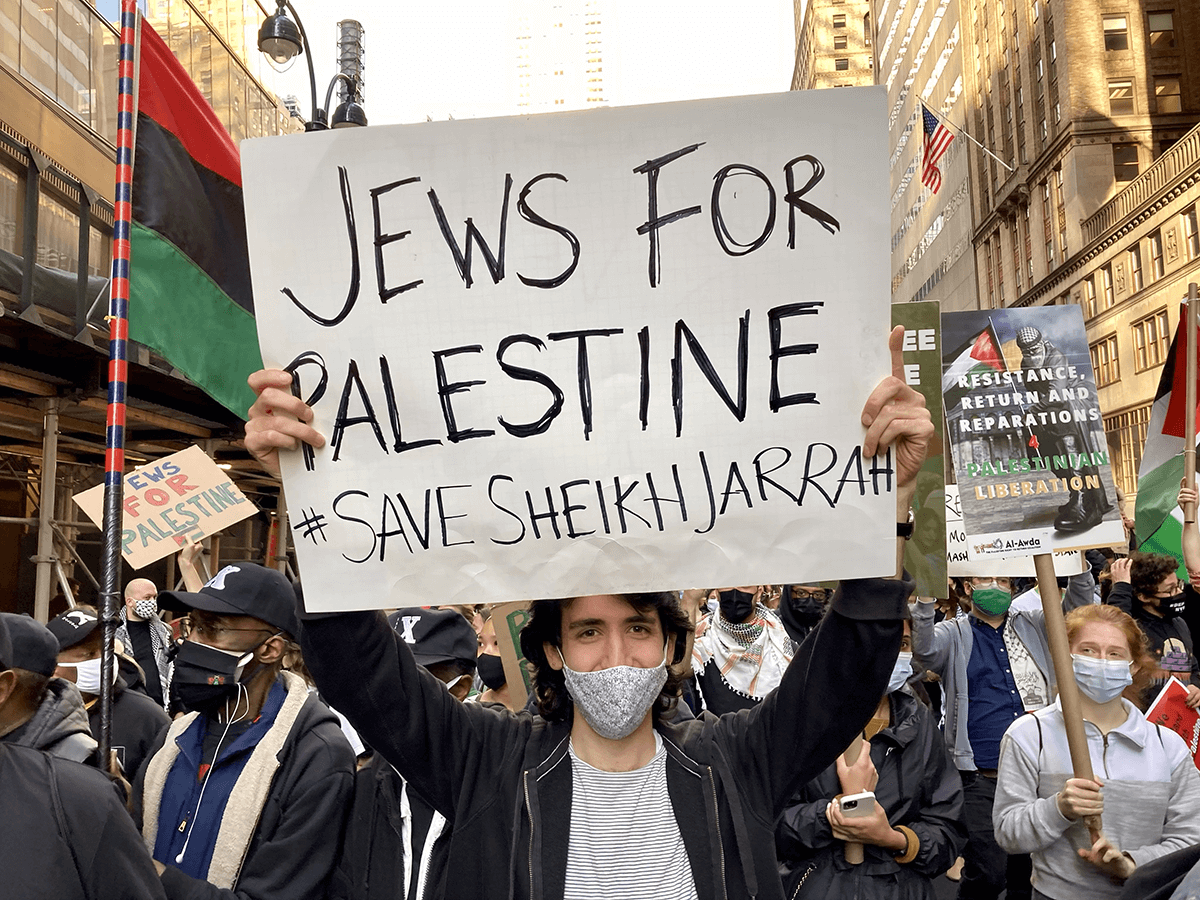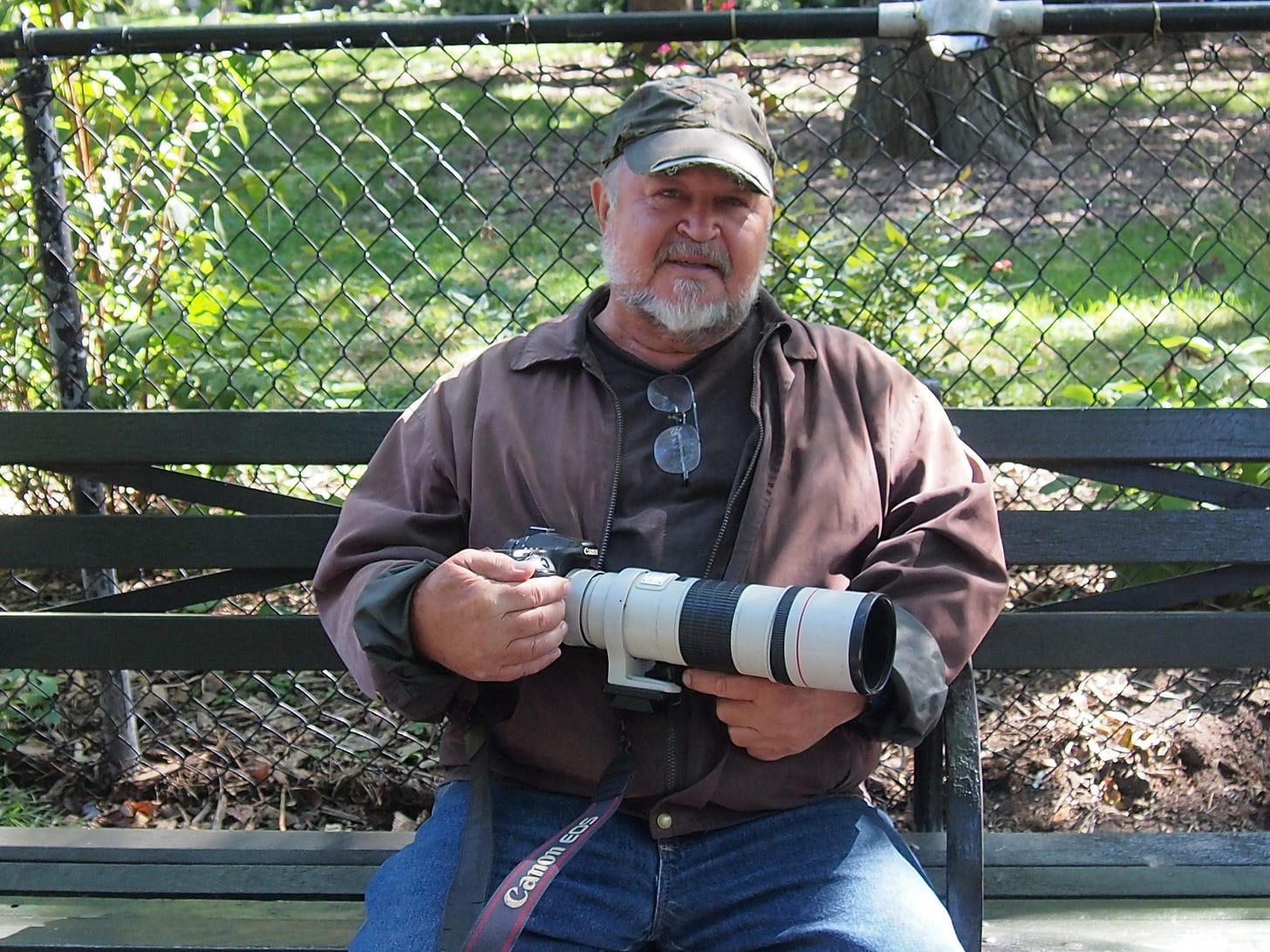Don’t Be on the Side of the Executioner
This past week’s shocking events in Israel and the Gaza Strip have left many on the left struggling with fundamental questions Hamas’ attacks raise: Can it ever be acceptable to use violence to achieve political aims? Or simply to take revenge on those who have wronged you?
In this essay, Indypendent Editor-in-Chief John Tarleton takes us on a journey from a notorious bombing campaign in the Algerian war of independence that was memorialized in a classic 1960s movie, to the music festival where 260 young Israelis were murdered last weekend, to 9/11’s angry aftermath, to the violent founding of the state of Israel in 1948, to the ominous signs that present-day Israel will commit horrific war crimes in its quest to return to Gaza and destroy Hamas.
Don’t Be on the Side of the Executioner: Reflections on a New Round of Massacres in Israel and Gaza
By John Tarleton
A clandestine bombmaker places explosives in the handbags of three young Algerian women. They each wear fashionable clothes and haircuts and disperse into the crowded city to place their deadly wares. Their upscale destinations — a cafe, a dance club and an airport lounge — are full of civilians. As the minute hand on the wall clock in the cafe marches toward the zero hour, the camera pans over the unsuspecting victims — friends hunched over a table in conversation, a baby licking an ice cream cone, young people dancing to merengue music. The camera doesn’t judge. It invites viewers to ask themselves under what circumstances, if any, they could justify such an act.
The Europeans who pack these venues can enjoy themselves because ruthless security forces insulate them from the wrath of the colonized native population. The soon-to-be victims are complicit, but do they deserve to die, especially the young people with their whole lives ahead of them?
I thought of this scene from The Battle of Algiers, Gillo Pontecorvo’s classic movie about the brutal guerrilla war that took place in French Algeria from 1954-1957 last Saturday as details of Hamas’ incursion into southern Israel emerged.
Hamas’ bloodiest massacre occurred at the Supernova music festival held in the desert three miles from the Gaza border. In a case of life imitating art, an estimated crowd of 3,000 Israelis danced through the night and greeted the sunrise. At that very moment, Hamas fighters were breaching the high-tech security fence complete with surveillance cameras and remotely-controlled machine guns that keeps the 2.2 million residents of the Gaza Strip confined in what Human Rights Watch calls an “open-air prison.”
The Gaza Strip is filled with the descendents of Palestinians who were driven from their homes in the ethnic cleansing campaigns that marked the creation of the state of Israel in 1948. The unemployment rate there is 50%. Water and power are available only a few hours per day, at the best of times. Their Hamas rulers answer to no one. And, worst of all, there is no exit as they are blocked by Israel on three sides and by Israel’s ally, Egypt, to the south.
While the Gazans remain trapped in squalor and despair, their Israeli neighbors are able to move freely and pursue comfortable middle-class lives in nearby towns, or on rural kibbutzim, many of which date back to Israel’s founding era.
With a powerful military, their mastery of technologies that can be used to surveil and control restless populations and warming relations with several Arab states under the U.S.-backed Abraham Accords, Israelis in recent years have come to think of the “Palestinian problem” as a thing of the past. Out of sight, out of mind.
For many of the Hamas fighters who descended on the music festival via paragliders, pick-up trucks and motorcycles, this may have been their first journey outside of Gaza’s confines in almost two decades (Gaza’s security fence dates back to 2007), if not their entire lives. In the moment when they encountered the young Israelis whose freedom and happiness required their immiseration, Hamas gleefully killed as many of them as they could and took others hostage. Given the chance, the victims of Israeli apartheid became the victimizers and acted with a vengeance.
The scenes from the music festival massacre are heartbreaking. Young people fleeing for their lives, shrieking and falling to the ground fatally wounded. Like their French Algerian counterparts in Battle of Algiers, they accepted the benefits of living in an unjust society they neither created nor questioned. But, does that mean they deserved to be summarily executed by Hamas? And their semi-naked bodies paraded through the streets of Gaza City afterward?
In the bombing scene in Battle of Algiers, the camera glances around the room a second time. We see the wounded staggering outside to a chorus of wailing police sirens and the broken, bloody corpses lying amid the rubble that were living human beings a few moments before. If you think this is justified, Pontecorvo seems to say, then be willing to look at the results.
We will need more of that unflinching honesty in the days and weeks ahead.
To read the rest of “Don’t Be on the Side of the Executioner: Reflections on a New Round of Massacres in Israel and Gaza” by John Tarleton, click here.
Yes, I want to support The Indypendent today!
MORE COVERAGE
Why I Stand with Palestine
By Judith Mahoney Pasternak
Striking Tappan, NY Auto Workers Hunker Down for a Long Fight
By Amba Guerguerian
Once a Homeless Youth, Now a Leader Changing City Policies
By Sunny Nagpaul
Remembering the Birdman of Tompkins Square Park
By Joan Amato & Cliff Conner
Indy Radio Update
On this week’s Indypendent News Hour, we spoke with Mexico city-based analyst Laura Carlsen about NYC Mayor Eric Adams’ recent trip to Mexico, Ecuador and Colombia to discourage migrants from coming to New York. We also spoke with Carl Miller and Indy criminal justice correspondent Ted Hamm about Carl’s ongoing quest for exoneration in a notorious 1979 murder case that was bungled by prosecutors and our co-hosts John Tarleton and Amba Guerguerian discussed the latest news from Israel and Gaza and put it into context. For the full show, click here.








